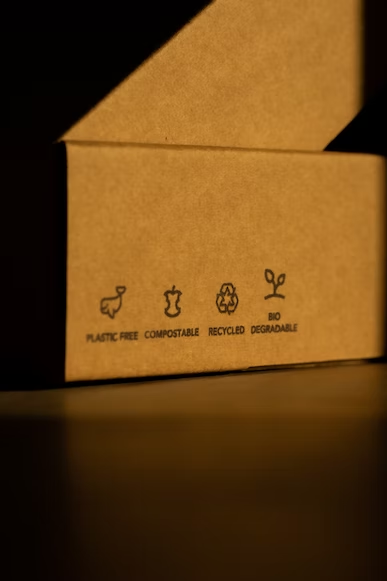Packaging is an important part of the product delivery process. It keeps products safe and secure during transport, and it also provides the first impression to customers when they see the product on store shelves. That’s why it’s important for businesses to automate their packaging processes as much as possible. In this blog post, we will discuss some of the top practical tips for automating your packaging processes. Let’s get started!
1) Use Automated Packaging Equipment
Automated packaging equipment can help businesses significantly reduce the amount of time and labor needed to package products. There are a variety of different types of automated packaging equipment available, so businesses should carefully consider their needs and choose the equipment that is best suited to their specific requirements. There are automated palletizers used in the industry for loading products onto pallets, as well as automated stretch wrappers and case sealers. Additionally, some businesses may also want to consider investing in an automated storage and retrieval system (AS/RS). These systems can be used to store packaging materials and finished products in a warehouse or other storage facility. Automated storage and retrieval systems can help businesses save time and improve efficiency by reducing the need for manual handling of products.
2) Use Bar Codes to Track Products
Bar codes can be used to track products throughout the packaging process. This can help businesses ensure that products are properly packaged and that they are being shipped to the correct destination. Additionally, bar codes can be used to track inventory levels of packaging materials and finished products. This information can be used to optimize production schedules and ensure that businesses have the necessary packaging materials on hand when they are needed.
Bar codes can also be used to automate the labeling of products. This can help businesses save time and reduce the amount of labor needed to label products. Automated labeling systems can print labels directly onto products or packaging materials. Additionally, some automated labeling systems can apply labels to products using a variety of methods, such as heat transfer, pressure-sensitive adhesives, or ultrasonic welding.
3) Use Packaging Software
Packaging software can help businesses automate many aspects of the packaging process. Packaging software can be used to create and print barcodes, labels, and shipping documents. Additionally, packaging software can be used to track inventory levels and generate production reports. This information can help businesses improve their packaging processes and make more efficient use of their resources.
Packaging software is available in a variety of different formats, including cloud-based applications and desktop applications. Cloud-based applications can be accessed from any computer or mobile device with an internet connection, while desktop applications must be installed on a computer system. Both types of applications have their advantages and disadvantages, so businesses should carefully consider their needs before selecting a packaging software solution.
4) Use Packaging Guidelines
Packaging guidelines can help businesses ensure that their products are packaged correctly and that they meet all necessary safety requirements. The most common type of packaging guidelines is industry-specific, such as those developed by the Food and Drug Administration (FDA) for the food industry or the Department of Transportation (DOT) for the transportation industry. However, many businesses also develop their own internal packaging guidelines. These guidelines can help businesses ensure that their products are consistently packaged and that they meet all applicable safety requirements.
5) Train Employees on Proper Packaging Procedures
It is important for businesses to train all employees who are involved in the packaging process on how to properly package products. This includes employees who operate automated packaging equipment as well as employees who perform manual tasks such as loading products onto pallets or applying labels to products. Training employees on proper packaging procedures help ensure that products are packaged correctly and that they meet all safety requirements. Employees who are familiar with proper packaging procedures will also be able to package products more quickly and efficiently.
Businesses that automate their packaging processes can save time and labor costs, while also ensuring that their products are packaged correctly and meet all applicable safety requirements.
6) Use the Right Packaging Materials
Businesses should select packaging materials that are appropriate for their products and their shipping requirements. For example, businesses that ship fragile products will need to use packaging materials that provide adequate protection. Additionally, businesses should consider the environmental impact of their packaging materials and choose materials that can be easily recycled or reused.
The type of packaging material that a business uses will also have an impact on the cost of packaging and shipping. Businesses should select packaging materials that are both cost-effective and meet their needs.
7) Work with a Packaging Specialist
Businesses that are unsure of how to automate their packaging processes can work with a packaging specialist. Packaging specialists can help businesses select the right packaging equipment and software, as well as develop custom packaging solutions.
Packaging specialists can also provide training on proper packaging procedures and assist businesses in developing internal packaging guidelines. In addition, packaging specialists can help businesses select the right packaging materials and develop recycling and reuse programs.
Working with a packaging specialist is an important step for businesses that want to automate their packaging processes. By working with a specialist, businesses can be sure that they are taking all the necessary steps to improve their packaging processes.
Packaging is an important process for businesses, as it can help them ensure that their products are packaged correctly and meet all applicable safety requirements. Automating the packaging process can save time and labor costs, while also ensuring that products are properly packaged. Businesses should select the right packaging materials and equipment based on their needs, and they should also work with a packaging specialist to make sure they are taking all the necessary steps to improve their packaging processes. In addition, businesses should train employees on proper packaging procedures to ensure that products are consistently packaged correctly. By following these tips, businesses can automate their packaging processes and improve their product packaging.













